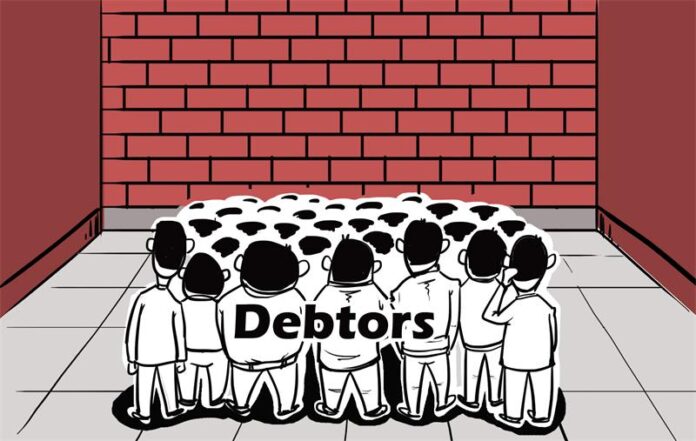By Philippe Burger, Dean of Faculty of Economic and Management Sciences, and Professor of Economics, University of the Free State
Public debt repayments in some African countries are at their highest levels since 1998. The Conversation Africa’s founding editor Caroline Southey talks to dean and economics professor Philippe Burger about the danger of debt problems some African countries face.
What’s behind the spike in debt servicing repayments?
For most countries experiencing new highs in debt servicing costs, it is not so much a spike, but rather a gradual increase over several years. As Figure 1 which uses data from the International Monetary Fund (IMF) shows, the Gross Debt of General Government (which includes central, provincial/state, and local government levels) steadily increased as percentage of GDP over the last 15 years (for brevity we will call this ratio the debt ratio). This period includes the global financial crisis as well as the COVID periods.
For emerging market and developing economies the debt ratio increased from 33.5% in 2008 to 64.6% in 2022.
Though at a slightly lower level, the same scenario played itself out for sub-Saharan African countries. With higher debt comes higher debt servicing costs. Although the COVID pandemic caused an accelerated increase in the debt ratio, the ratio was on an upward trajectory well before the pandemic.
Our mission is to share knowledge and inform decisions.
This trajectory can also be seen in individual countries. In Zambia the debt ratio was a mere 21.9% in 2007, but increased to 140.2% in 2020, when the government defaulted. In Ghana it was 22.6% in 2007, before quadrupling to 88.8% in 2022. The increase in the debt ratios in Zambia and Ghana can also be seen in the increase in their governments’ interest payments as percentage of GDP. In the case of Ghana, it increased from 1.4% in 2007 to 7.2% in 2022, while in Zambia it increased from 1.4% to 6%.
Ghana and Zambia have defaulted: what impact will this have?
A default often has a significant fallout in the economy, with governments, companies and households facing forced austerity. Governments must then cut back significantly on their expenditure, often in the face of shrinking tax revenues.
This often negatively affects social expenditure on for instance health and education. If such a country must knock on the door of the IMF for assistance, as both Ghana and Zambia had to do, the institution usually prescribes several tough policy and economic adjustments.
In early 2023 eleven of the top-20 borrowers from the IMF were African countries.
Egypt is the second largest borrower from the IMF, incurring loans in the aftermath of the political and economic instability that followed the Arab Spring in 2011.
The period leading up to a default is also often characterised by companies and households facing much higher inflation. This inflation often originates from a deep depreciation of the local currency because of capital flight of foreign and domestic investors losing confidence.
Both the Ghanaian Cedi and Zambian Kwacha depreciated significantly in the period leading up to their government’s default.
Which other African countries are on the watchlist: what stress signs should we be alive to?
Which countries to watch is a complex question. Although economists sometimes use rules of thumb, such as a debt ratio that exceeds say 60% or 90%, the answer depends on several variables. Thus, a high debt ratio is not always considered a problem.
For instance, at 121.7%, the debt ratio of the US is much higher than that of Ghana. Yet Ghana defaulted because the interest cost of its debt as percentage of GDP was much higher than that of the US (2.1% for the US).
Read more on Conversation




